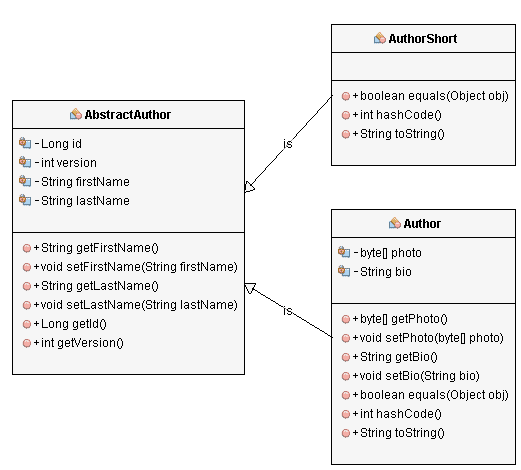Hibernate Tips: How to Map Multiple Entities to the Same Table
Take your skills to the next level!
The Persistence Hub is the place to be for every Java developer. It gives you access to all my premium video courses, monthly Java Persistence News, monthly coding problems, and regular expert sessions.
Hibernate Tips is a series of posts in which I describe a quick and easy solution for common Hibernate questions. If you have a question for a future Hibernate Tip, please leave a comment below.
Question:
Some of our entities have a lot of attributes and we don’t need all of them in all use cases. Can I create a second entity that only maps a subset of the most commonly used attributes? Is there anything I should consider?
Solution:
Yes, you can map two or more entities to the same database table. But you should only do that if you will use all of these entities to perform write operations or to define associations between entities. If that’s not the case, you should better use a DTO projection.
Entity Mappings
If you want to map the same database table to two entities, you should create a simple inheritance hierarchy.
The superclass should be abstract and contain all attributes that are shared by both entities. You should map it as a mapped superclass so that it is not an entity itself.
@MappedSuperclass
public class AbstractAuthor {
@Id
@GeneratedValue(strategy = GenerationType.AUTO)
@Column(updatable = false, nullable = false)
private Long id;
@Version
private int version;
private String firstName;
private String lastName;
...
}
The class AuthorShort maps only the most commonly used attributes. It extends the superclass and doesn’t add any attributes itself.
By default, Hibernate would map this entity to the database table AuthorShort. You can override the default table mapping with the @Table annotation and specify the table name in the name attribute.
@Entity
@Table(name = "author")
public class AuthorShort extends AbstractAuthor {}
And the Author entity maps all columns of the author table. So, it needs to provide the mapping information of the not commonly used attributes that are not already defined by the AbstractAuthor class.
@Entity
public class Author extends AbstractAuthor {
private byte[] photo;
private String bio;
...
}
That’s all you need to do to map 2 entities to the same database table. But there are a few things you need to keep in mind before you implement your use cases.
Potential Problems
Even so, you told Hibernate to map both entities to the same database table; Hibernate doesn’t know which Author and AuthorShort entities represent the same database record. That has a few implications:
- Hibernate doesn’t refresh any of these entities if you update the other one. So, you need to either take care of that yourself or make one of the entities immutable.
- Hibernate stores all managed entities in the 1st level cache and delays all write operations until it flushes the persistence context. This happens transparently so that you normally don’t recognize it.
But that changes when you map 2 entities to the same database table. A call of the EntityManager.find method to load an AuthorShort entity doesn’t trigger a flush of the Author entities. So, Hibernate doesn’t write the pending changes to the database and the find method might return an outdated entity.
You can avoid that by using a JPQL query. - Hibernate handles the Author and AuthorShort entities independently of each other. Hibernate will throw an OptimisticLockException if you update an AuthorShort and an Author entity that map the same database record within the same transaction.
Learn more:
You can learn more about advanced entity mappings in my Hibernate Advanced Online Training.
Hibernate Tips Book

Get more recipes like this one in my new book Hibernate Tips: More than 70 solutions to common Hibernate problems.
It gives you more than 70 ready-to-use recipes for topics like basic and advanced mappings, logging, Java 8 support, caching, and statically and dynamically defined queries.



Hello Sir,
Thank so much for these tips, but I have a case of multiple entities (e.g student entity, instructor entity, etc. and all these will be logged in using a single user entity table with their login credentials. But I see that this approach will not work. Is it ok to use the inheritance.SINGLE_TABLE approach as I read in one of your blog post?
Yes, that’s most likely the better approach for your situation.